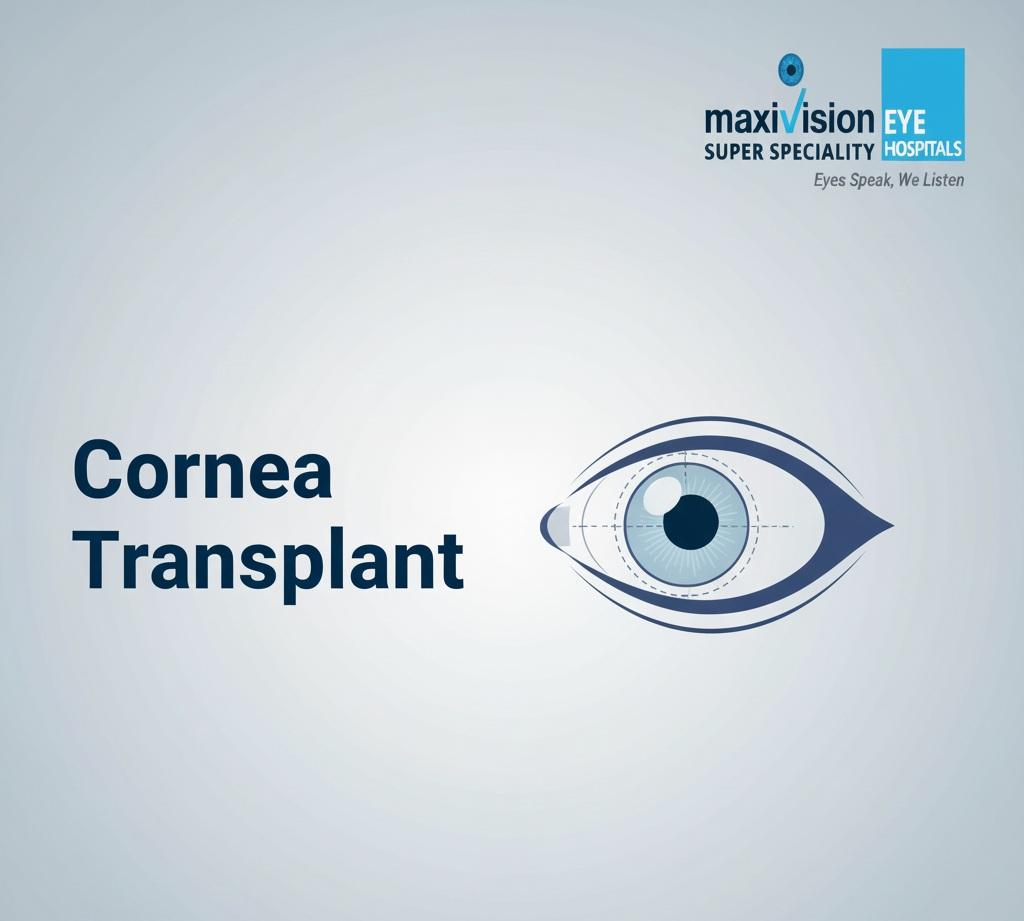Cornea Transplant for Keratoconus: Key Insights for Patients

Keratoconus is a progressive eye condition that affects the shape and strength of the cornea. As the cornea becomes thinner and cone-shaped, vision starts to blur, making daily life challenging. While glasses and contact lenses help in the early stages, advanced keratoconus may require surgical options. One of the most effective treatments in such cases is a cornea transplant.
Understanding Keratoconus and Its Impact
-
The cornea is the clear front layer of the eye that focuses light.
-
In keratoconus, the cornea weakens and bulges outward like a cone.
-
This distortion leads to blurry, distorted vision and sensitivity to light.
Many patients may not recognize the condition early. Regular eye health checkups play a vital role in detecting keratoconus before it progresses to severe stages. Early diagnosis helps in exploring treatments like cross-linking, which may delay or prevent the need for a cornea transplant.
When Does a Cornea Transplant Become Necessary?
-
In advanced keratoconus, the cornea may become too scarred or thin.
-
Contact lenses may no longer fit properly or provide clear vision.
-
At this stage, doctors may recommend a cornea transplant to restore sight.
A cornea transplant involves replacing the damaged cornea with healthy donor tissue. This procedure can significantly improve vision, allowing patients to regain independence in daily activities.
Types of Cornea Transplant for Keratoconus
-
Penetrating Keratoplasty (PK): The full thickness of the cornea is replaced.
-
Deep Anterior Lamellar Keratoplasty (DALK): Only the affected front layers are replaced, keeping the patient’s own healthy inner layers.
-
The choice depends on the severity of keratoconus and the overall eye health of the patient.
DALK is often preferred for keratoconus because it reduces the risk of rejection and offers a quicker recovery compared to PK. However, only an experienced eye surgeon can decide the most suitable option.
What Patients Can Expect Before Surgery
-
A thorough eye examination will be conducted at the hospital.
-
Doctors explain the risks, benefits, and expected outcomes.
-
Patients may need to stop wearing contact lenses weeks before the surgery.
This preparation ensures that the cornea is in the best possible condition for accurate surgical planning. Emotional support and counseling also help patients prepare for the journey ahead.
Recovery After a Cornea Transplant
-
Recovery takes several months, sometimes up to a year.
-
Regular follow-up visits are essential to monitor healing.
-
Eye drops and medications help prevent infection and rejection.
Vision usually improves gradually. Patients may need glasses or contact lenses even after surgery to achieve the best clarity. Following the doctor’s instructions carefully is key to long-term success.
Possible Risks and How They Are Managed
-
The most common concern after a cornea transplant is graft rejection.
-
Other risks include infection, swelling, or increased eye pressure.
-
With early detection and proper treatment, most complications can be managed effectively.
Regular checkups allow doctors to spot warning signs early. Patients should immediately report symptoms like redness, pain, or sudden vision changes.
Life After Cornea Transplant for Keratoconus
-
Many patients experience life-changing improvements in their vision.
-
Activities such as reading, driving, and working become easier.
-
With care, a cornea transplant can last many years, even a lifetime.
Maintaining overall eye health through balanced nutrition, protective eyewear, and avoiding eye strain further supports long-term results.
Choosing the Right Eye Hospital for Cornea Transplant
-
Success depends on the expertise of the surgeon and hospital facilities.
-
Patients should look for hospitals that offer advanced corneal care and post-surgery support.
-
A hospital with a dedicated cornea specialist ensures safer procedures and better recovery outcomes.
Finding a trusted hospital also means having access to modern technologies, sterile surgical environments, and compassionate patient care—all of which contribute to a smoother healing process.
Conclusion
A cornea transplant can restore vision and hope for patients with advanced keratoconus. From early diagnosis to surgical expertise, every step matters in achieving the best outcome. Regular eye checkups, timely medical guidance, and choosing the right care center make all the difference. For patients seeking safe, reliable, and specialized treatment, MaxiVision Eye Hospital stands as a super speciality eye hospital where expertise meets compassionate care.






